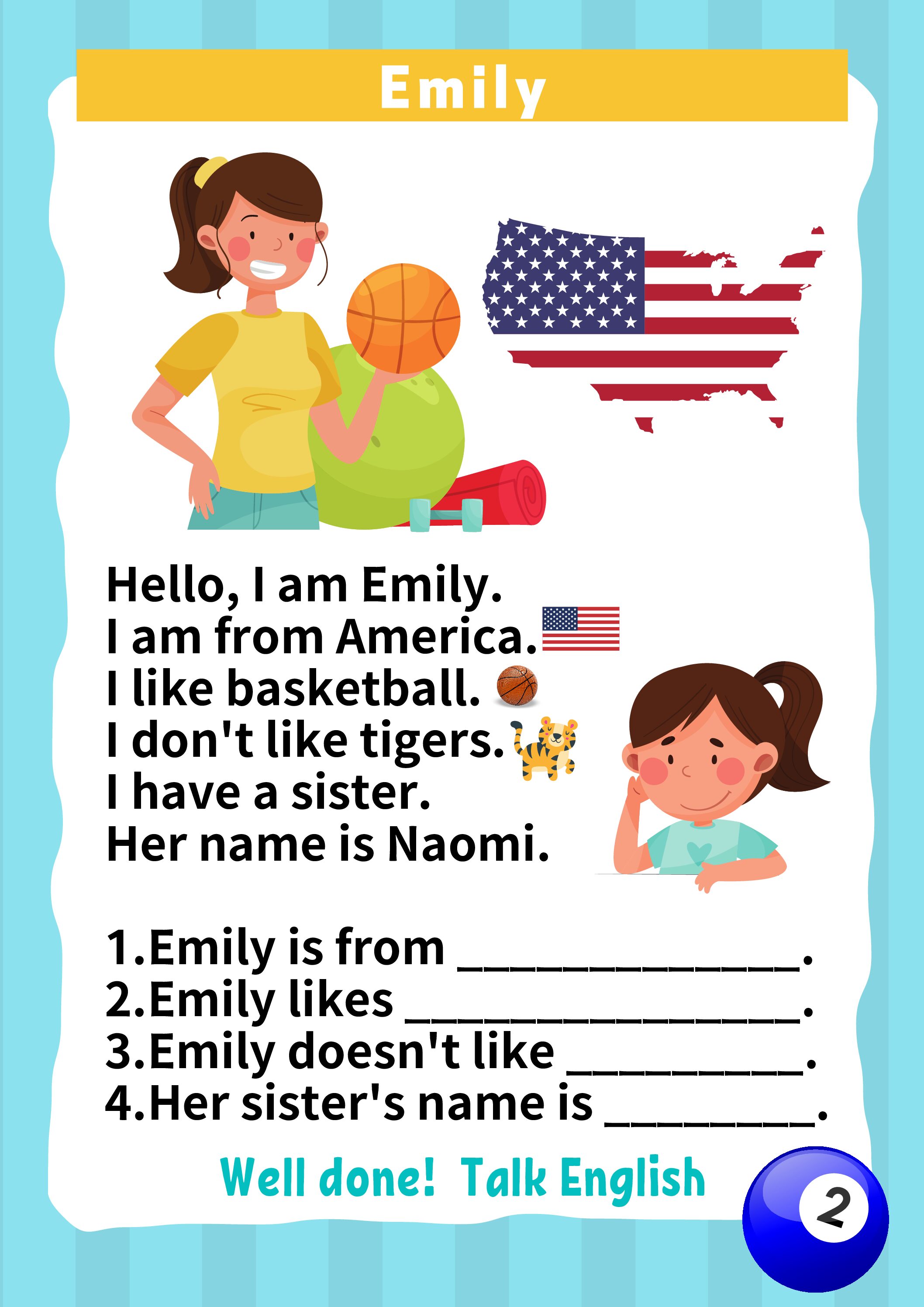Changing Plans
Erin and her best friend Hannah are high school students. They try to do something new together every month, and they spend a lot of time talking about what to do and where to go next. This summer, they planned to go to an outdoor music festival. They had never ( 26 ). They started reading a lot of information about it online to prepare for it because they had no idea what the festival would be like.
However, on the day of the event, it rained heavily, and the festival was canceled. They were very unhappy because they had spent so much time getting ready for it. They had even bought new T-shirts for the event. They were upset that they would not have a chance to ( 27 ). They thought about what to do instead. In the end, they put on the T-shirts and went to see a movie. It was not as special as going to the festival, but they had a good time.
Talking Animals
One of the biggest differences between humans and other animals is that humans can use language. However, there are some animals that can also “talk.” In fact, many birds are good at copying the sounds that humans make. Parrots, which many people keep as pets, are one example of a bird that is famous for being able to copy human language. There are also stories about sea animals such as whales and seals that make sounds like they are talking. There is even an elephant named Koshik who ( 28 ).
Koshik, who lives in a zoo in South Korea, has started to say a few Korean words.
At first, experts did not believe this story because of the shape of elephants’ mouths. To learn more about Koshik, Angela Stoeger, an Austrian researcher, asked a group of Korean people to listen to Koshik. The people then wrote down ( 29 ). Most of the people wrote down the same words, saying that they could hear words like “hello,” “sit down,” and “good.”
In order to “speak” Korean, Koshik does something other elephants never do when making sounds. He puts his trunk* inside his mouth. When Koshik was young, he was the only elephant at the zoo where he lived. Stoeger believes that Koshik found this special way to make sounds because he ( 30 ). Therefore, Koshik decided to find a way to communicate with his trainers. Stoeger says that these abilities may have developed because animals want to make friends.
From: Anna Keyser <a-keyser@hurra.com>
To: Melissa Fletcher <mfletcher81@wnet.com>
Date: January 26
Subject: Haircut
__________________________________________________________
Hi Melissa, I have a question for you. I got a haircut yesterday at Staci’s Salon. I really don’t like it, so I want to find a stylist who can fix it for me. I remember you said that the hair salon you go to is good. Could you tell me the name of it? Also, is there a good stylist that you recommend?
By the way, I have some good news. Our friend Liz and her husband John are going to have a baby boy! I’m so excited for them. I hope that their daughter doesn’t get too jealous, though. I’m sure she’ll enjoy being a big sister, but it may take some time for her to get used to sharing her things with her new brother.
Anyway, we are going to have a party for Liz. I’m going to plan it. I’ll be inviting all her friends as well as the family, and everyone will bring a small gift for the baby. That way, Liz and John won’t have to buy everything by themselves. Babies need so many things like toys, clothes, and bottles. I’ll be sending you an invitation in the mail soon.
Your friend,
Anna
Plastic-Bottle Schools
Plastic garbage is a problem around the world. There is not enough space to keep it, and it damages the environment. It is also difficult and expensive to recycle. In Guatemala in Central America, many towns have trouble collecting garbage, so large amounts of plastic garbage are left in the streets. A woman named Susanne Heisse came up with an idea to help solve this problem.
Her idea was to help communities work together to build plastic-bottle schools. First, people collect plastic bottles, and then they fill the bottles with plastic garbage. By pushing a large amount of garbage tightly into the bottle, the bottle becomes strong. These bottles are then used to make walls. Eventually, an entire school can be built.
One group in Guatemala, Hug It Forward, has started using this idea in its projects. Students and other members of the community join in and are an important part of each project. They are asked to collect garbage and fill bottles. In many cases, each class competes to prepare more plastic bottles than the other classes. The class that wins gets a small prize, and everyone is happy that they helped build a part of their school.
Hug It Forward works with small, poor communities around Guatemala. Between 2009 and 2018, it helped build classrooms in about 100 communities. Because plastic-bottle schools are cheaper than schools built in the traditional way, other groups have started similar projects around the world. Now, plastic-bottle schools can be found in places such as South Africa, Cambodia, and the Philippines. Through such projects, garbage is turned into something useful.


